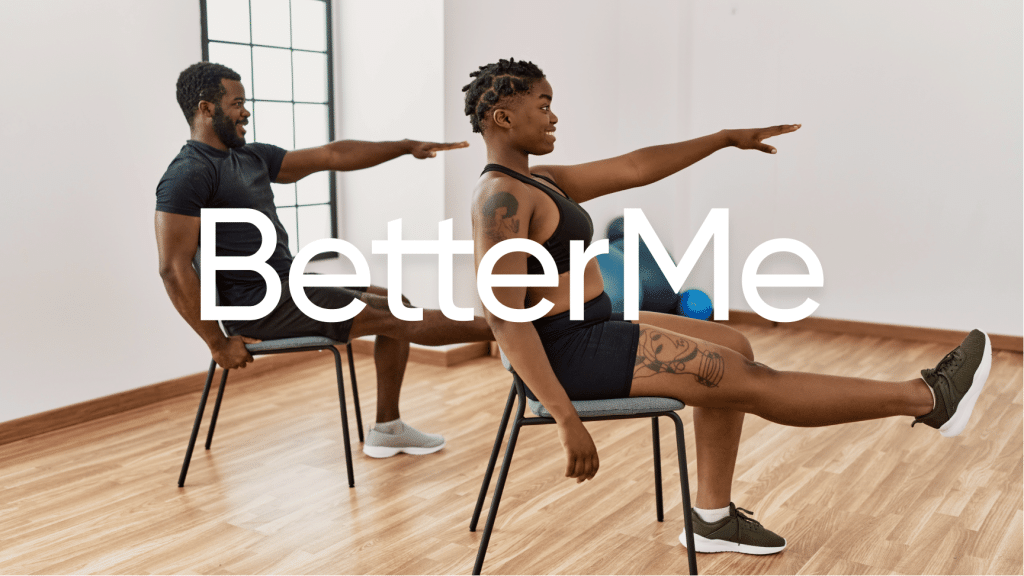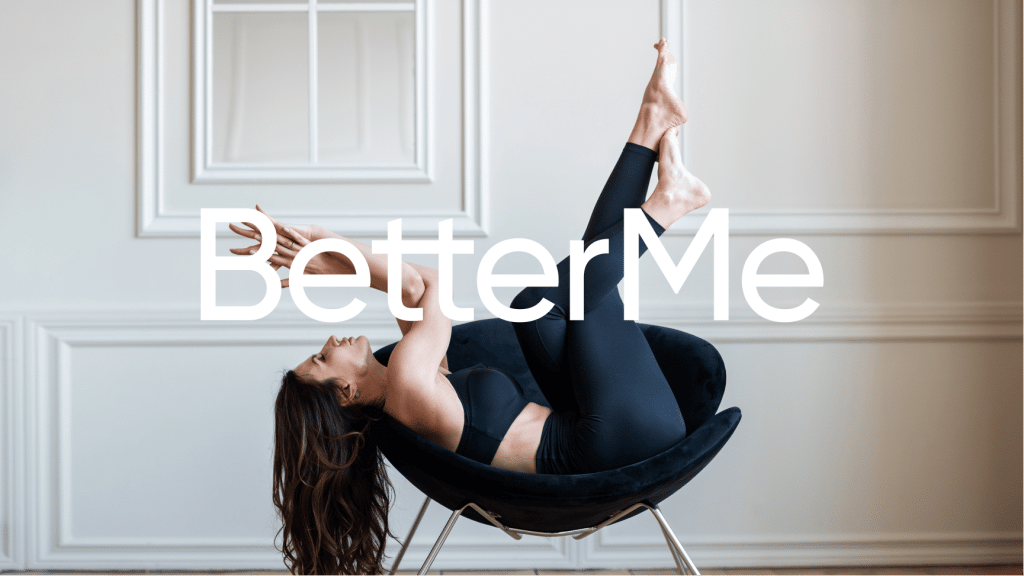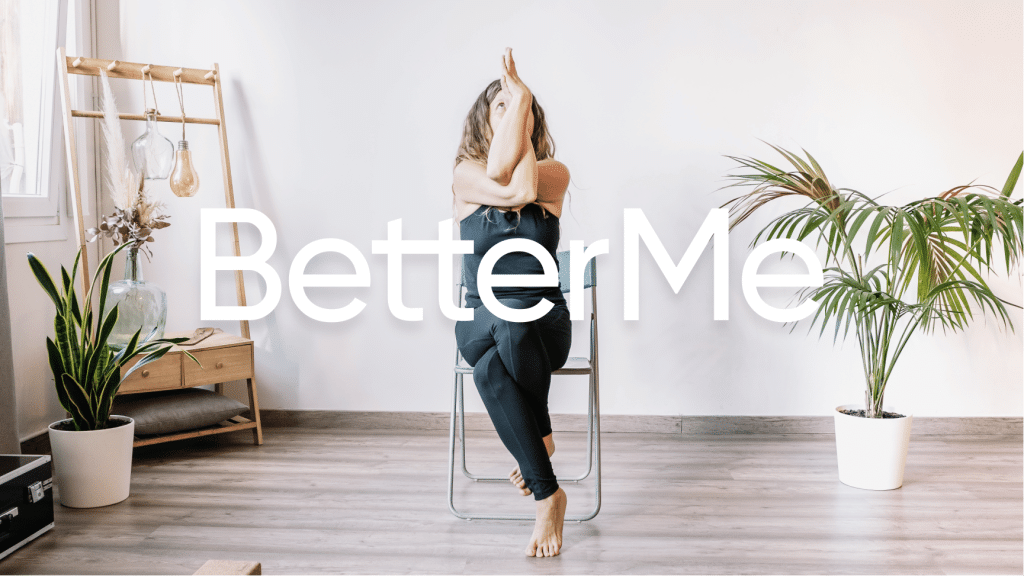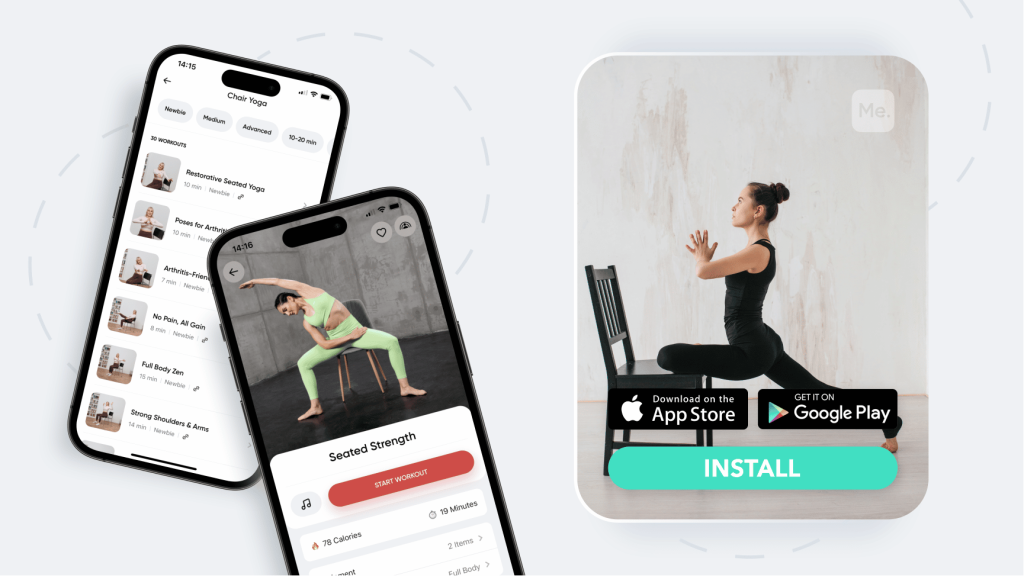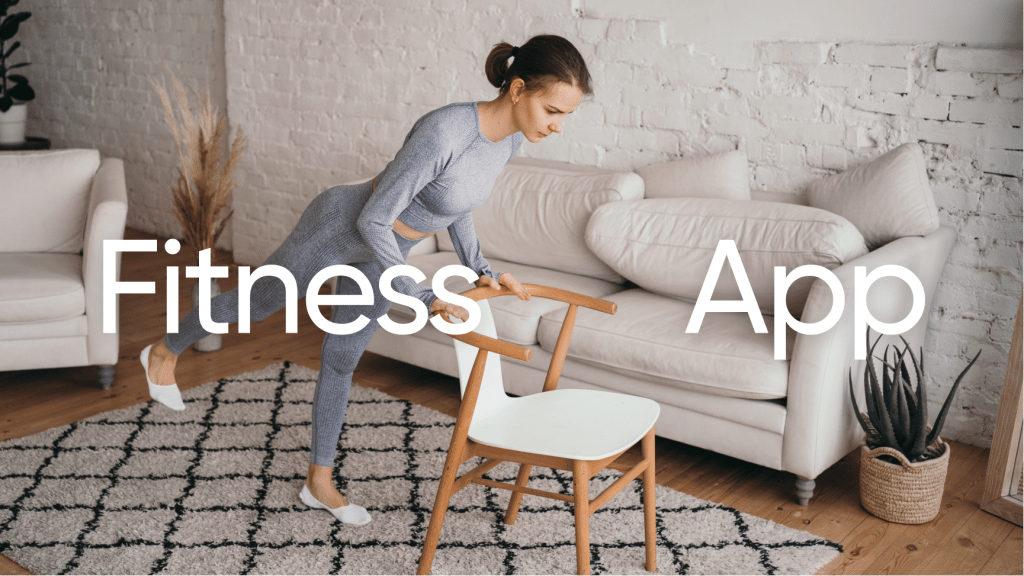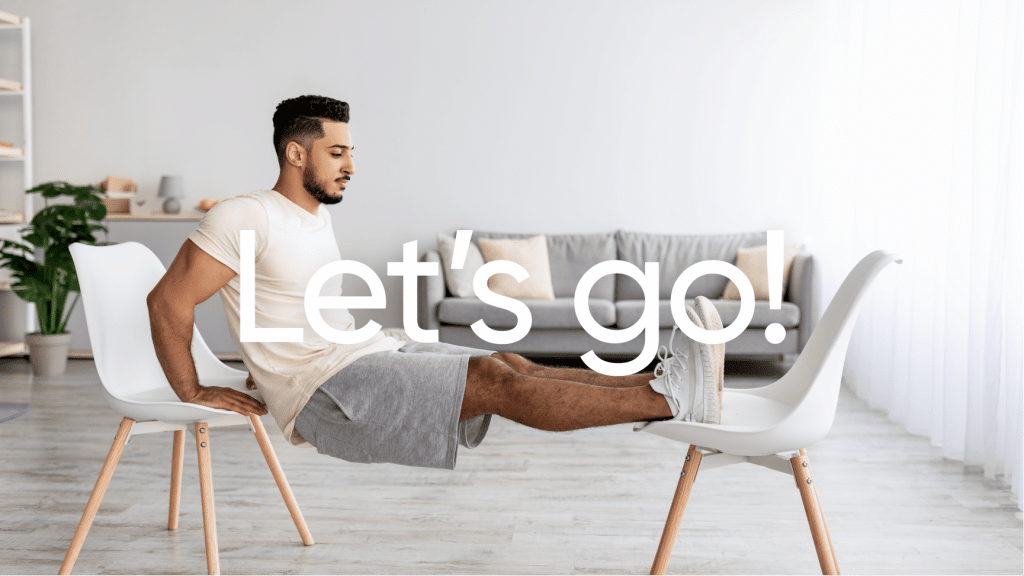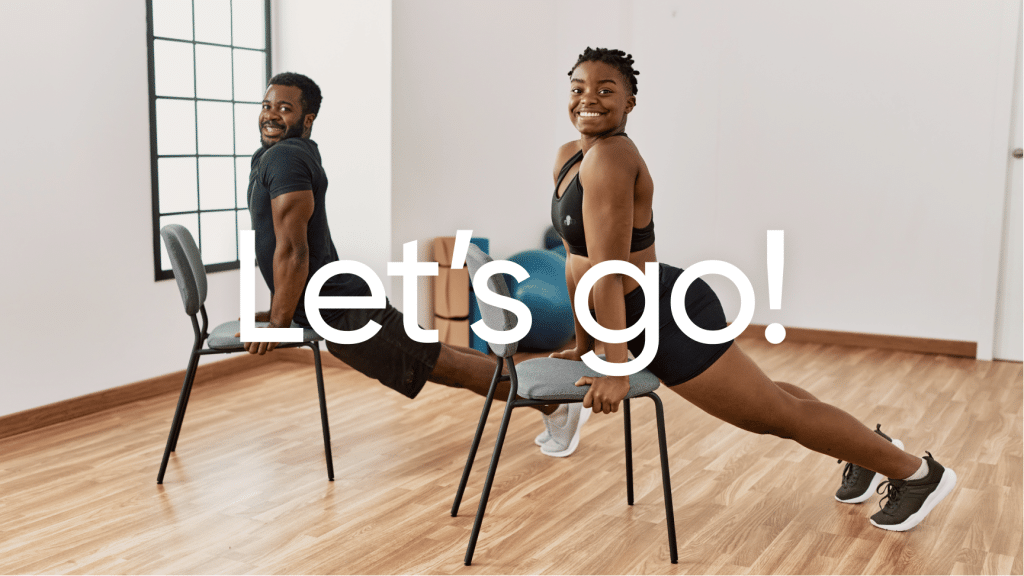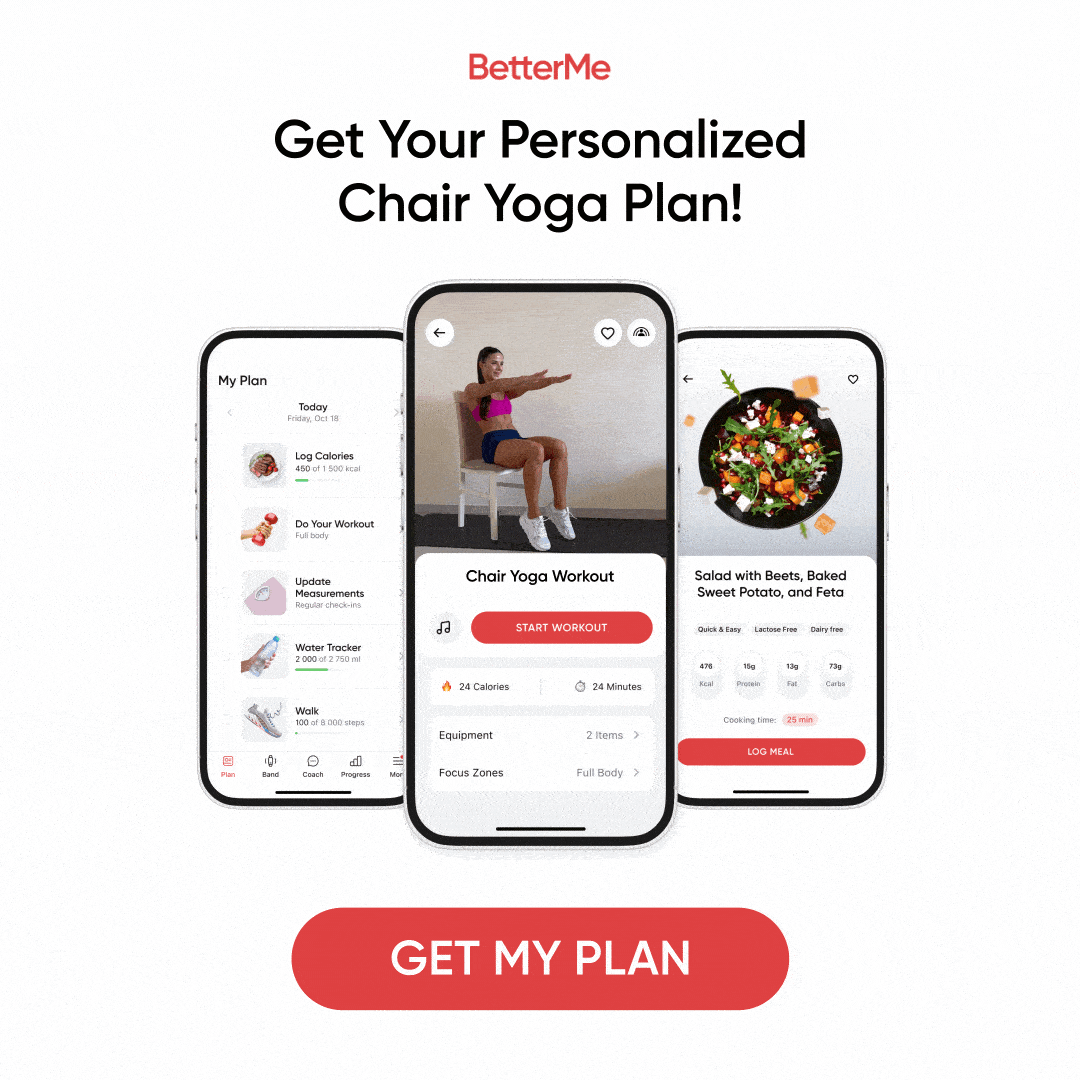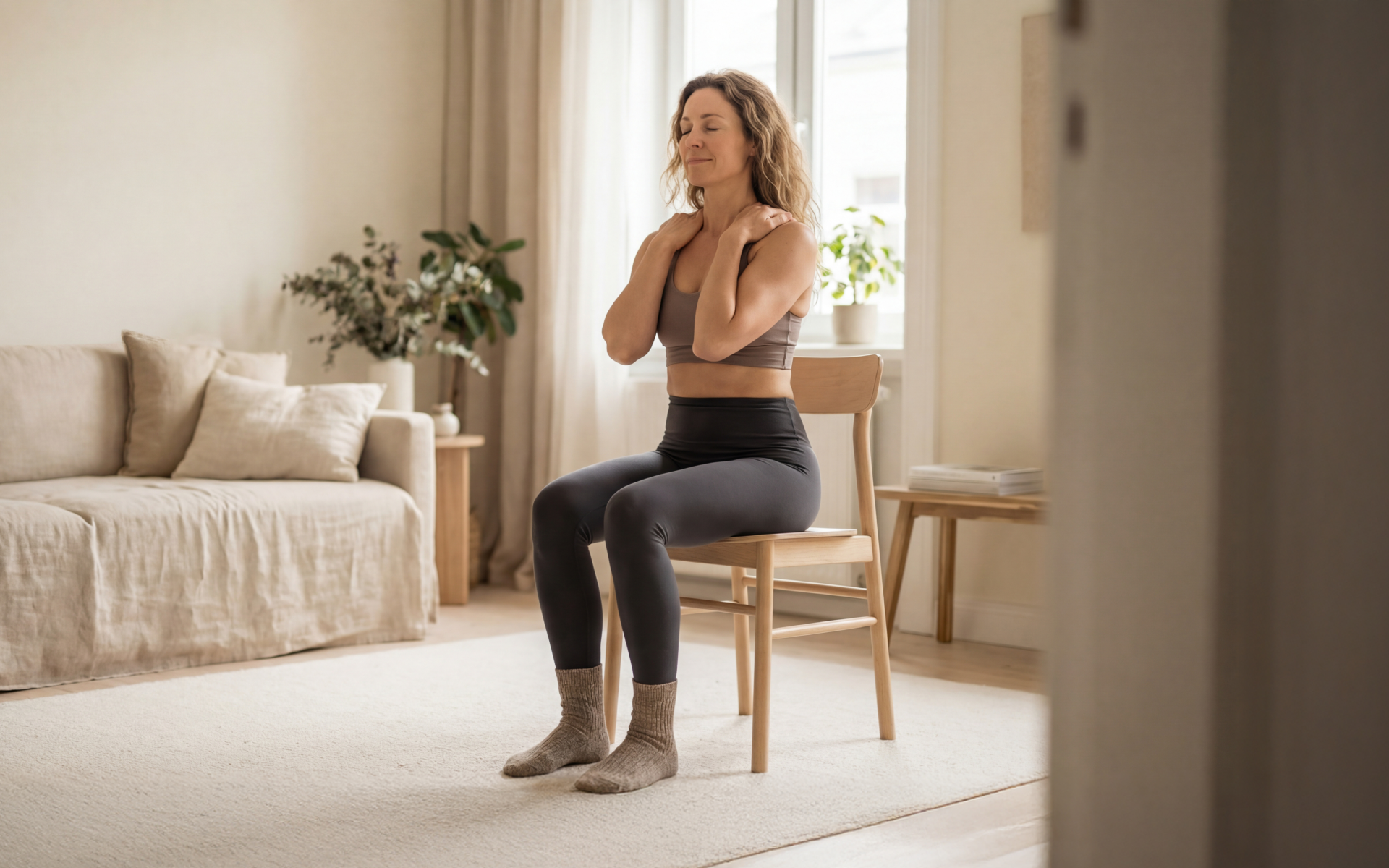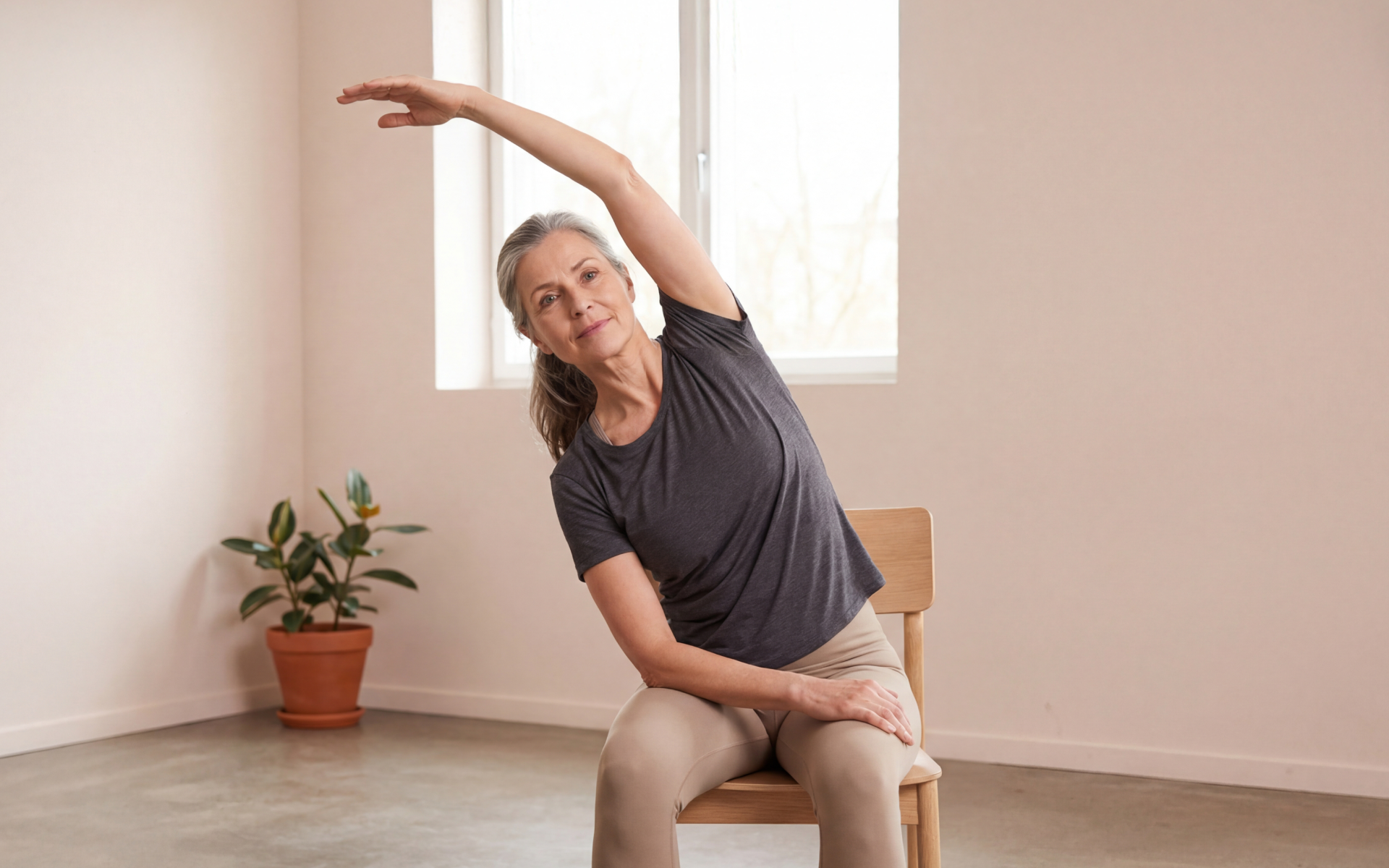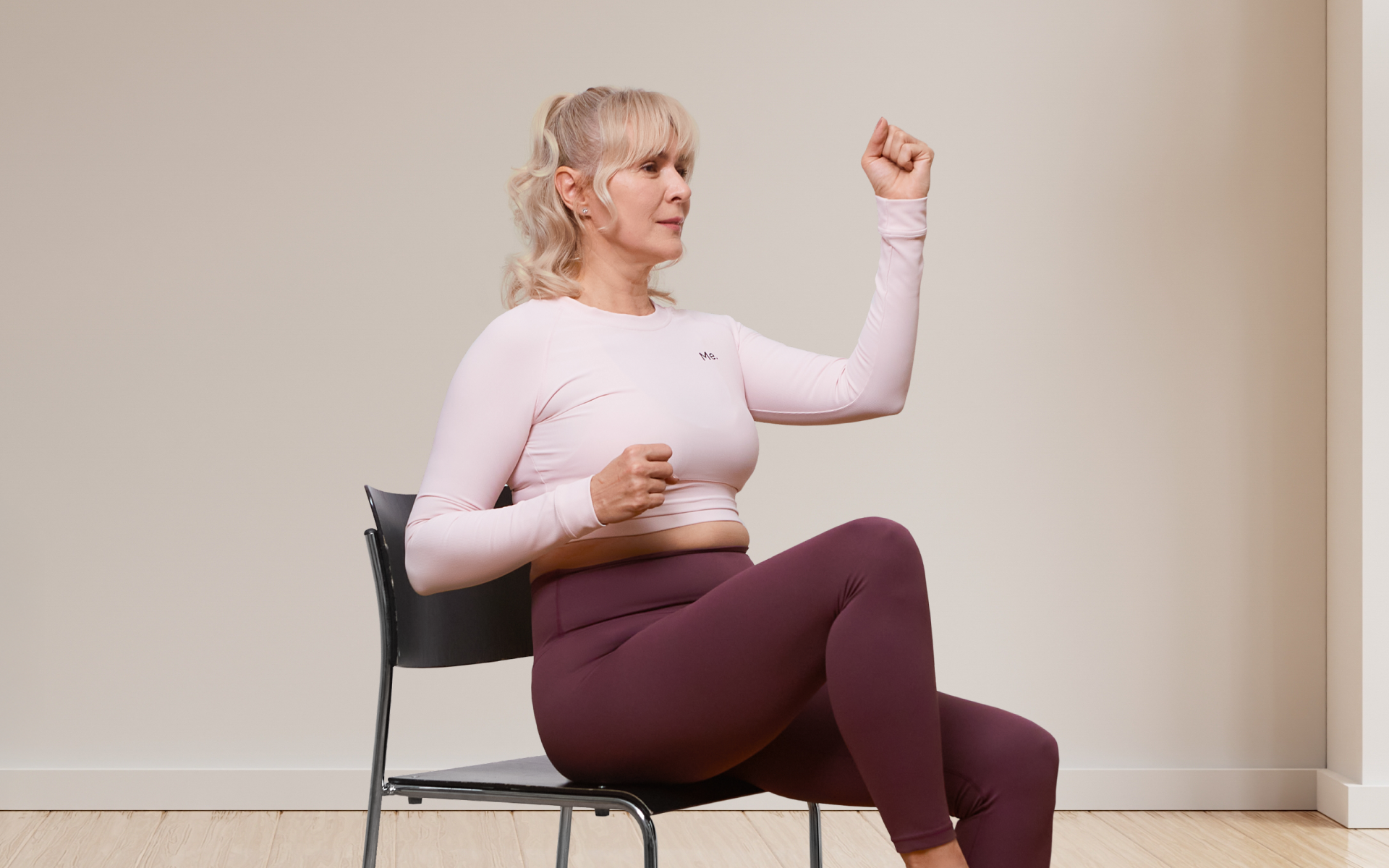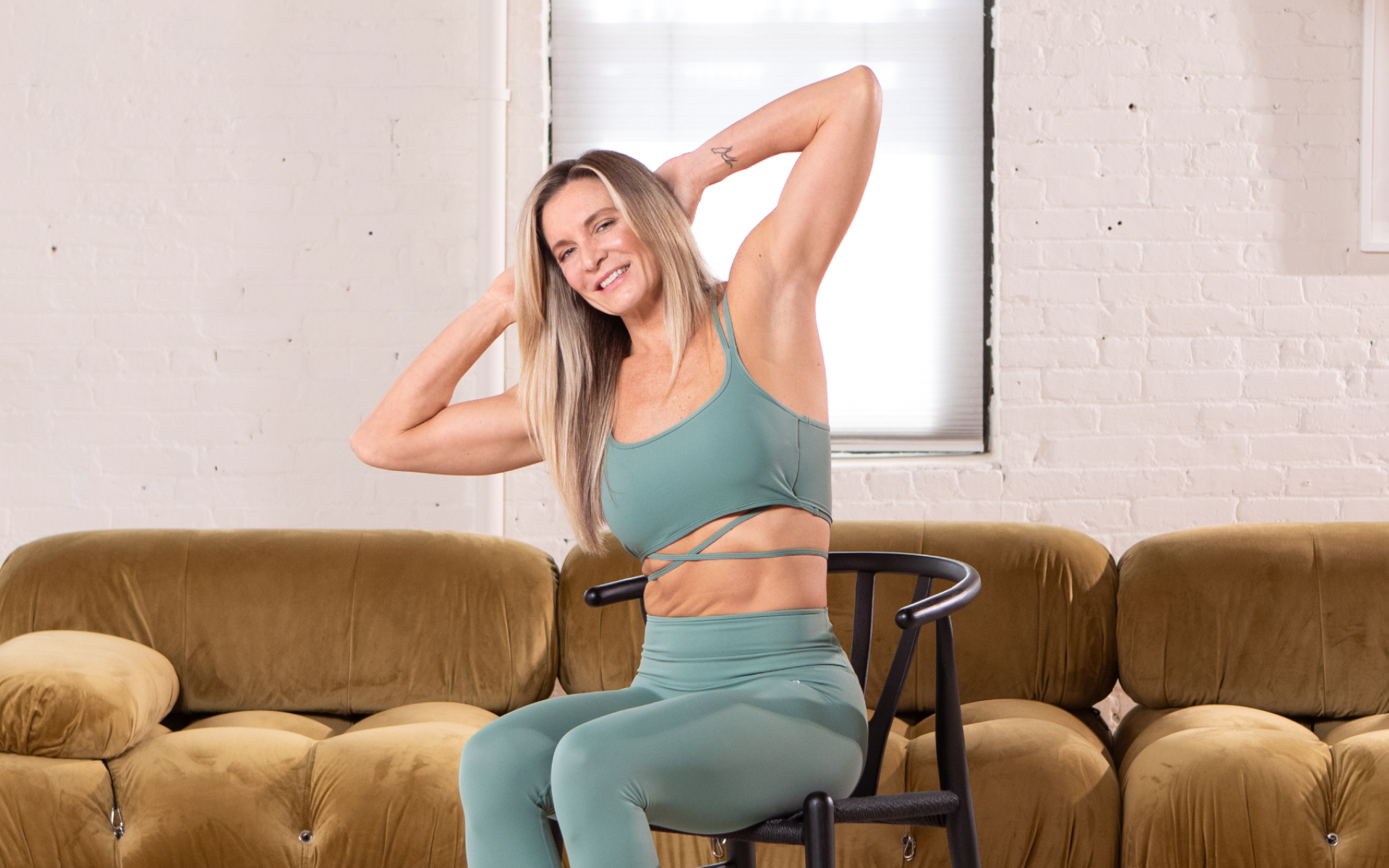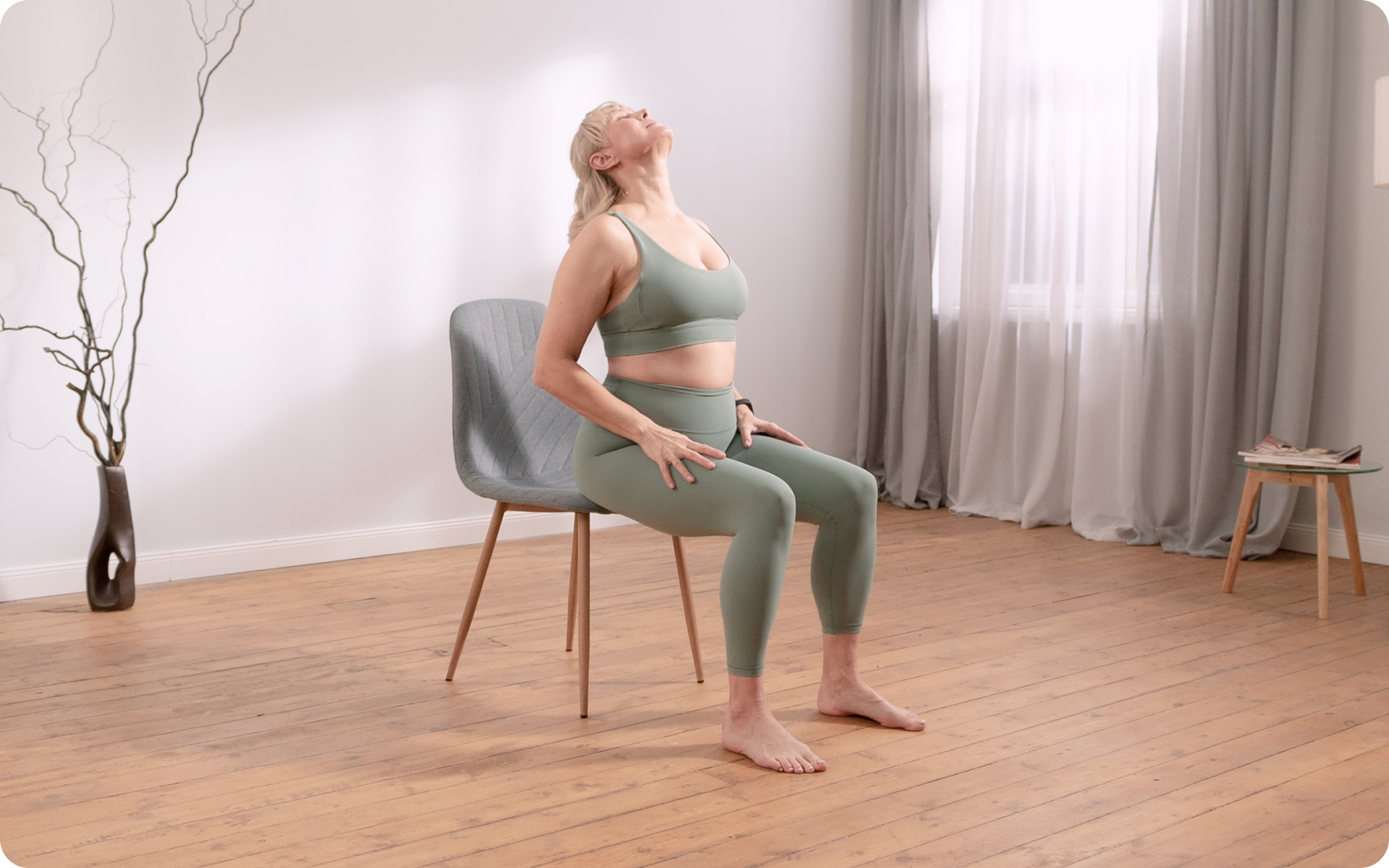Many professionals spend countless hours sitting at their desks, hunched over their computers, and juggling multiple tasks. This sedentary lifestyle, coupled with the stress of meeting deadlines and balancing personal commitments, can take a significant toll on one’s physical and mental well-being (1) (7). But what if there was an easy, accessible solution to alleviate some of these issues, right at your desk? Welcome chair yoga – a gentle yet effective practice that can help you find relief from physical strains and reduce mental stress, all without leaving your office chair. In this informative piece we’ll discuss the myriad benefits of chair yoga for working professionals, empowering you with practical tools and techniques to transform your workday and improve your overall health.
Can I Do Chair Yoga At Work?
Absolutely! Chair yoga is a versatile and adaptable practice that can be easily incorporated into your work routine. It’s designed to be performed while sitting in a chair, making it perfect for office workers who spend long hours at their desks.
Let’s address some common concerns and explore the benefits of chair yoga at work.
1. Distractions
You might worry about being interrupted or feeling self-conscious while practicing chair yoga in the office. To minimize distractions, consider scheduling short breaks or using your lunch hour to practice in a quiet area or conference room.
2. Limited Space
If you’re concerned about limited space, rest assured that chair yoga requires minimal room. Most poses can be performed right at your desk without disturbing your colleagues.
3. Inappropriate Attire
Office attire might not seem ideal for yoga, but chair yoga poses are typically gentle and don’t require excessive stretching. You can perform most poses comfortably in business-casual clothing.
4. Finding The Right Chair
The best chair type for office yoga is a sturdy, stable chair with a comfortable, flat seat and a supportive backrest. The armless design is optional but can offer additional flexibility for certain poses.
The ideal chair for office yoga should have the following features:
- Sturdy and stable: Choose a chair with a strong and stable base to ensure safety while practicing chair yoga poses. Avoid chairs with wheels or those that swivel, as they can be unstable and increase the risk of accidents.
- Comfortable seat: A chair with a comfortable, flat seat is essential for maintaining proper alignment during seated poses. Avoid chairs with overly cushioned or contoured seats, as they may hinder your ability to maintain correct posture.
- Supportive backrest: A chair with a supportive backrest can be helpful for certain poses that require back support. However, make sure it’s not too high so that it doesn’t obstruct your range of motion during stretches and twists.
- Armless Design (Optional): While not strictly necessary, a chair without armrests can provide more freedom of movement for certain poses, allowing you to stretch and twist more comfortably.
Read More: Chair Pilates For Seniors With Chronic Pain: Gentle Exercises To Reduce Discomfort
How To Do Chair Yoga At Work?
Chair yoga is specifically designed to be accessible and achievable even within the confines of your office space. If you’re wondering how to do chair yoga at work, here are some tips:
1. Structure Your Day
If possible, designate a few blocks of time to practice chair yoga in the morning and afternoon. This will help you build a sustainable habit and encourage self-care.
2. Choose Poses Wisely
Not all poses will be appropriate for the office environment. Stick to gentle postures that do not require excessive stretching or movement, such as seated twists, gentle backbends and arm stretches.
3. Move Mindfully
Before beginning a chair yoga session, take a moment to check in with your body. Notice any physical sensations or mental distractions and allow yourself to be present in the moment.
4. Focus On Your Breath
Chair yoga is a great opportunity to practice mindful breathing exercises. Slow, deep breaths help to lower stress and improve concentration, leaving you feeling refreshed and energized.
5. Use Props
If you need extra support for certain poses, try using a bolster or block. This can help to increase comfort and improve your alignment during the pose.
Why Do Yoga At Your Desk?
The benefits of chair yoga at work are plentiful. Both mental and physical stress can be alleviated with regular chair yoga practice, improving your overall health, productivity, creativity, and happiness.
1. Reduced Muscle Tension And Pain
Chair yoga stretches and strengthens muscles, and helps alleviate tension and pain associated with prolonged sitting.
2. Improved Posture
Regular practice can help correct poor posture, reducing the risk of developing chronic pain and discomfort.
3. Increased Flexibility And Strength
Chair yoga poses can enhance your flexibility and overall muscle tone (2).
4. Reduced Stress And Anxiety
Focusing on your breath and movement during chair yoga can help calm your mind and reduce work-related stress (3) (5).
BetterMe app will provide you with a host of fat-frying fitness routines that’ll scare the extra pounds away and turn your body into a masterpiece! Get your life moving in the right direction with BetterMe!
5. Enhanced Focus And Productivity
Taking short breaks for chair yoga can boost your mental clarity and focus, ultimately improving your work performance.
6. Improved Energy Levels
Chair yoga helps stimulate blood flow and circulation, providing a natural energy boost to combat afternoon fatigue.
7. Better Balance And Coordination
Practicing chair yoga can enhance your sense of balance and body awareness, reducing the risk of falls and injuries (9).
8. Increased Mindfulness
Incorporating chair yoga into your workday encourages mindfulness, helping you stay present and fully engaged in your tasks (4).
9. Promotes Team Bonding
Introducing chair yoga sessions at work can foster a sense of camaraderie among colleagues, creating a supportive and positive work environment.
10. Boosts Creativity
The relaxation and stress relief provided by chair yoga can help unblock mental barriers, allowing creative ideas to flow more freely.
11. Supports Mental Health
Regular practice of chair yoga can contribute to better overall mental health, helping prevent burnout and reduce feelings of anxiety or depression (8).
12. Enhances Immune Function
By reducing stress and promoting relaxation, chair yoga can help support a healthy immune system, potentially leading to fewer sick days and increased overall health (6).
13. Adaptable For All Fitness Levels
Chair yoga is suitable for people of all ages and fitness levels, making it an inclusive and accessible form of exercise for everyone in the workplace.
10 Ideal Chair Yoga Poses For Office Workers
Here’s a curated list of 10 chair yoga poses that are suitable for office workers, addressing their specific concerns and pain points.
Seated Cat-Cow Stretch (Chakravakasana)
Why it’s suitable: This pose helps to improve posture and alleviate tension in the neck, shoulders, and upper back. It’s a seated variant of the traditional Cat-Cow stretch, making it perfect for office workers.
How to perform it:
- Sit on the edge of your chair with your feet flat on the floor and hip-width apart.
- Place your hands on your knees or thighs.
- Inhale as you arch your back, lifting your chest and gaze upward (Cow pose).
- Exhale as you round your spine, tucking your chin toward your chest and drawing your navel inward (Cat pose).
- Repeat this sequence 5-10 times, moving with your breath.
Read More: The Benefits Of Chair Yoga For Obese Beginners
Seated Forward Bend (Paschimottanasana)
Why it’s suitable: This pose stretches the hamstrings and lower back, providing relief from tightness and discomfort caused by prolonged sitting. It’s a seated version of the classic forward bend.
How to perform it:
- Sit on the edge of your chair with your feet flat on the floor and slightly wider than hip-width apart.
- Inhale and lengthen your spine.
- Exhale as you hinge forward from your hips, allowing your chest to rest on or between your thighs.
- Rest your hands on the floor or grasp your ankles or shins.
- Hold the pose for 5-10 breaths, then slowly come back up to a seated position.
Seated Twist (Ardha Matsyendrasana)
Why it’s suitable: This gentle twist helps to relieve tension in the spine and shoulders, improving posture and flexibility. It’s a seated variation of the traditional Half Lord of the Fishes pose.
How to perform it:
- Sit on the edge of your chair with your feet flat on the floor and hip-width apart.
- Inhale and lengthen your spine.
- Exhale as you twist to the right, placing your left hand on your right knee and your right hand on the back of your chair.
- Hold the twist for 5-10 breaths, then return to center and repeat on the other side.
Chair Pigeon Pose (Eka Pada Rajakapotasana)
Why it’s suitable: This pose helps stretch the hips and thighs, reducing discomfort from sitting for extended periods. It’s a seated adaptation of the traditional Pigeon pose.
How to perform it:
- Sit on the edge of your chair with your feet flat on the floor and hip-width apart.
- Place your right ankle on your left knee, forming a figure-4 shape with your legs.
- Gently press your right knee downward while keeping your spine straight.
- Hold the pose for 5-10 breaths, then switch legs and repeat on the other side.
5. Seated Side Stretch (Parsva Sukhasana)
Why it’s suitable: This pose stretches the sides of the torso and shoulders, alleviating tightness caused by hunching over a computer. It’s a modification of the Easy Pose side stretch.
How to perform it:
- Sit on the edge of your chair with your feet flat on the floor and hip-width apart.
- Inhale and raise your right arm overhead.
- Exhale as you bend your torso to the left, feeling a stretch along the right side of your body.
- Hold the stretch for 5-10 breaths, then return to center and repeat on the other side.
Seated Chest Opener (Anuvittasana)
Why it’s suitable: This pose helps to open the chest and shoulders, counteracting the effects of slouching at a desk. It’s a seated variation of the Standing Backward Bend.
How to perform it:
- Sit on the edge of your chair with your feet flat on the floor and hip-width apart.
- Place your hands behind you on the seat of the chair, fingers pointing forward.
- Inhale as you lift your chest and arch your back, gazing upward.
- Hold the pose for 5-10 breaths, then release and return to a neutral spine.
Seated Neck Stretch
Why it’s suitable: This simple stretch helps to relieve tension in the neck and shoulders, which is common among office workers.
How to perform it:
- Sit on the edge of your chair with your feet flat on the floor and hip-width apart.
- Gently tilt your head to the right, bringing your ear towards your shoulder.
- Hold the stretch for 5-10 breaths, then slowly return to center and repeat on the other side.
Betterme will keep you laser-focused on your weight loss journey! Nutrient-packed meal plans, fat-blasting workouts, galvanizing challenges and much more. Try using the app and see for yourself!
Chair Warrior II (Virabhadrasana II)
Why it’s suitable: This pose strengthens the legs and core while stretching the hips, thighs, and shoulders. It’s a seated adaptation of the traditional Warrior II pose, making it suitable for office workers.
How to perform it:
- Sit sideways on your chair with your right thigh resting on the seat and your right knee bent at a 90-degree angle.
- Extend your left leg straight behind you, with your foot flat on the floor.
- Inhale and raise your arms to shoulder height, parallel to the floor, with palms facing down.
- Exhale and gaze over your right fingertips.
- Hold the pose for 5-10 breaths, then switch sides and repeat.
Seated Eagle Pose (Garudasana)
Why it’s suitable: This pose stretches the upper back, shoulders, and outer thighs, helping alleviate tension and tightness. It’s a seated variation of the traditional Eagle pose.
How to perform it:
- Sit on the edge of your chair with your feet flat on the floor and hip-width apart.
- Cross your right thigh over your left thigh, and if possible, hook your right foot behind your left calf.
- Extend your arms in front of you at shoulder height.
- Cross your left arm over your right arm, bending both elbows, and bring your palms together or place the backs of your hands together.
- Hold the pose for 5-10 breaths, then release and repeat on the other side.
Seated Ankle Rolls
Why it’s suitable: This gentle exercise helps to improve circulation, reduce ankle stiffness, and prevent swelling, which is especially important for office workers who sit for long periods.
How to perform it:
- Sit on the edge of your chair with your feet flat on the floor and hip-width apart.
- Lift your right foot off the ground and slowly rotate your ankle clockwise for 5-10 circles.
- Repeat counterclockwise for 5-10 circles, then switch sides.
Conclusion
Incorporating chair yoga into your workday can significantly improve your physical and mental well-being.
By practicing these ten poses specifically tailored for office workers, you can alleviate discomfort, enhance posture, and reduce stress without causing disturbance or requiring much space. Embrace chair yoga as a practical and efficient way to stay healthy and focused in the workplace.
DISCLAIMER:
This article is intended for general informational purposes only and does not serve to address individual circumstances. It is not a substitute for professional advice or help and should not be relied on for making any kind of decision-making. Any action taken as a direct or indirect result of the information in this article is entirely at your own risk and is your sole responsibility.
BetterMe, its content staff, and its medical advisors accept no responsibility for inaccuracies, errors, misstatements, inconsistencies, or omissions and specifically disclaim any liability, loss or risk, personal, professional or otherwise, which may be incurred as a consequence, directly or indirectly, of the use and/or application of any content.
You should always seek the advice of your physician or other qualified health provider with any questions you may have regarding a medical condition or your specific situation. Never disregard professional medical advice or delay seeking it because of BetterMe content. If you suspect or think you may have a medical emergency, call your doctor.
SOURCES:
- Adverse Effects of Prolonged Sitting Behavior on the General Health of Office Workers (2017, ncbi.nlm.nih.gov)
- Effect of Chair Yoga Therapy on Functional Fitness and Daily Life Activities among Older Female Adults with Knee Osteoarthritis in Taiwan: A Quasi-Experimental Study (2022, mdpi.com)
- Effects of a chair-yoga exercises on stress hormone levels, daily life activities, falls and physical fitness in institutionalized older adults (2016, sciencedirect.com)
- Effects of Mindfulness on Psychological Health: A Review of Empirical Studies (2011, ncbi.nlm.nih.gov)
- Fifteen Minutes of Chair-Based Yoga Postures or Guided Meditation Performed in the Office Can Elicit a Relaxation Response (2012, hindawi.com)
- Health Impacts of Yoga and Pranayama: A State-of-the-Art Review (2012, ncbi.nlm.nih.gov)
- Mental health effects of long work hours, night and weekend work, and short rest periods (2020, sciencedirect.com)
- The Effect of Yoga on Stress, Anxiety, and Depression in Women (2018, ncbi.nlm.nih.gov)
- Yoga Exercise Intervention Improves Balance Control and Prevents Falls in Seniors Aged 65+ (2022, ncbi.nlm.nih.gov)


